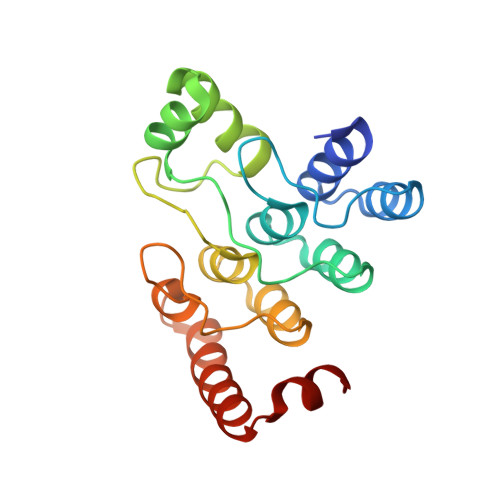Structural basis of impaired disaggregase function in the oxidation-sensitive SKD3 mutant causing 3-methylglutaconic aciduria.
Lee, S., Lee, S.B., Sung, N., Xu, W.W., Chang, C., Kim, H.E., Catic, A., Tsai, F.T.F.(2023) Nat Commun 14: 2028-2028
- PubMed: 37041140
- DOI: https://doi.org/10.1038/s41467-023-37657-9
- Primary Citation of Related Structures:
8DEH, 8FDS - PubMed Abstract:
Mitochondria are critical to cellular and organismal health. To prevent damage, mitochondria have evolved protein quality control machines to survey and maintain the mitochondrial proteome. SKD3, also known as CLPB, is a ring-forming, ATP-fueled protein disaggregase essential for preserving mitochondrial integrity and structure. SKD3 deficiency causes 3-methylglutaconic aciduria type VII (MGCA7) and early death in infants, while mutations in the ATPase domain impair protein disaggregation with the observed loss-of-function correlating with disease severity. How mutations in the non-catalytic N-domain cause disease is unknown. Here, we show that the disease-associated N-domain mutation, Y272C, forms an intramolecular disulfide bond with Cys267 and severely impairs SKD3 Y272C function under oxidizing conditions and in living cells. While Cys267 and Tyr272 are found in all SKD3 isoforms, isoform-1 features an additional α-helix that may compete with substrate-binding as suggested by crystal structure analyses and in silico modeling, underscoring the importance of the N-domain to SKD3 function.
Organizational Affiliation:
Verna and Marrs McLean Department of Biochemistry and Molecular Biology, Baylor College of Medicine, Houston, TX, 77030, USA.















